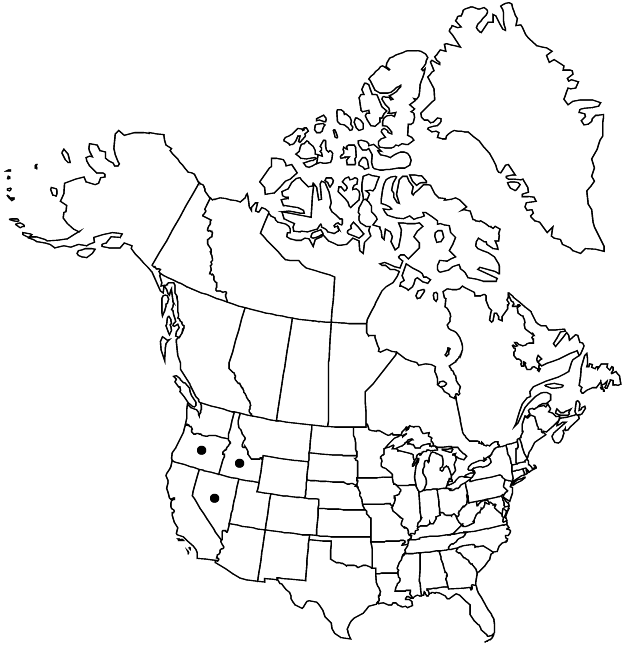Polygonum heterosepalum
Madroño 10: 250. 1950.
Herbs, compact, often cushionlike. Stems erect, green or reddish, simple or branched near base, not wiry, 1.5–5 cm, glabrous. Leaves uniformly distributed, dense, not articulated to ocreae, basal leaves persistent or caducous, distal leaves gradually reduced to bracts; ocrea 3–6 mm, glabrous, proximal part cylindric, distal part disintegrating almost to base, with whitish, straight, rigid fibers; petiole absent; blade 3-veined, without pleats, linear to lanceolate, 10–20 × 0.6–2.7 mm, margins revolute, smooth, apex spine-tipped. Inflorescences axillary; cymes in most axils, 2–3-flowered. Pedicels enclosed in ocreae, erect, 0.1–1 mm. Flowers closed; perianth 2.3–2.7 mm; tube 3–7% of perianth length; tepals overlapping, whitish with whitish or pink margins, petaloid, oblong, navicular, dimorphic, outer 2 shorter than inner 3, outer 2 0.8–1.2 mm, inner 2.3–2.7 mm, papillose at base, apex acute or acuminate; midveins unbranched; stamens 5–6. Achenes enclosed in perianth, olive brown, narrowly ovate to ovatelanceolate, 1.5–2 mm, faces subequal, shiny, smooth.
Phenology: Flowering Jun–Aug.
Habitat: Dry waste ground, open flats in sagebrush plains, ponderosa pine forests
Elevation: 1000-1500 m
Distribution

Idaho, Nev., Oreg.
Discussion
Of conservation concern.
Selected References
None.
Lower Taxa
"/2" is not declared as a valid unit of measurement for this property."-1.2mm" is not declared as a valid unit of measurement for this property.